QuestionHi,
My leopard gecko has been refusing food for the past week, and I'm really starting to get concerned. She was living in my classroom for the past 8 months, and there seemed to be no problem. When school ended and I brought her home 2 weeks ago she seemed fine, and she ate a batch of crickets, although it seemed that her hunting skills were more clumsy than usual. A few days later, I gave her some more crickets, and she completely ignored them. She seemed much more agitated than usual, wandering around more rapidly than usual and trying to climb the walls of her tank. I moved her to a quieter location, and that seemed to calm her down. Since then I have tried to feed her 2 more times and she has completely ignored the food. Only once did she look about to stalk a cricket, but it was moving away, and she didn't put much effort into following it before losing interest, and went back to ignoring the crickets. Physically she still looks healthy. Her tail is still fat, color is good, etc. She also shouldn't be due to shed for another week or two. I thought about getting some wax worms, but a few months ago I tried giving them to her when the pet store was out of crickets, and she didn't eat them, so I doubt she'll want any now. What can I do to try and spark her appitite?
Thanks,
Julia
AnswerHi Julia,
Leos hate change...moving from the classroom to your home is a change.
Is the lighting different where she is now? Brighter lights/dimmer lights may make her see things differently.
Double check your temperatures as per the care sheet below. Too low of temperatures can cause lack of appetite as their foods cannot digest at the proper rate if the temperatures are incorrect.
Stress(changes) can cause their internal parasite load to get too high. I suggest having a fecal check done to make sure that's not a cause of her lack of appetite. If the feces have been normal, then parasites most likely aren't the cause.
Good that her tail is staying nice and fat.
On some occasions, a female will produce eggs even if not with a male..generally you can see the eggs on their underside.
Also, if your leo is possibly a male, it can be showing breeding season signs.
It won't hurt her to go a short period without eating. If it continues, you can offer her one of the following...
The reason for one of the below products is to replace the gut bacteria(probiotics) which are needed for digestion.
bene bac...labeled for birds, approved for reptiles.
nutri bac
acidolophliz+
or plain, human grade acidolophus...... one capsule will dose for at least 3 days in a row.
BeneBac ..most larger pet stores should carry it...especially if they have birds...
Acidophiliz+ I think PetsMart carries it..if not....on line at www.reptilesupply.com
Some people use a tiny amount(1/2 cc or less) of live culture plain yogurt for 2-3 days, but this is only something that is recommended for healthy reptiles.
BASIC CARE FOR A LEOPARD GECKO
Leopards are pretty easy to care for but they do need
special care. Here are some of the basic needs of your gecko.
HOUSING: The need to have at least a 20 gallon long tank for one Leo. This needs to have a secure fitting screen top...they can be quite the escape artists!!! They need to have a humid hide box.You can make this with something as simple as a small plastic dish with a hole cut in one side and a small mesh bag filled with some Sphagnum moss coconut bark or Peat moss that you mist.
I made mine out of the small plastic folgers coffee containers...I cut an opening in the lid..and put the moss in..they LOVE it. I use the terrarium moss in mine.
I use that on the warm side of the tank. Be sure to provide a cool hidebox on the other end. I also provide a mid temperature hide...which is in the middle of the tank.I use the critter caves which you can purchase. NOT the ones that have heat in them!!!!
Provide secure climbing areas for your gecko. Fake plants, rocks and branches are all fine to use. be sure there are no wires or sharp ends to any fake plants you use.
*****SUBSTRATE:(that's the stuff on the floor of your tank) Newspaper, lizard carpet or paper towels work great and are easy to clean and are much safer than any loose substrate. Sand or other loose substrate is not recommended as that they can be deadly to the leo when it is ingested(eaten, even by accident while eating their insects)...A very graphic site of an impacted leo surg can be seen at http://homepage.mac.com/exoticdvm/reptile/PhotoAlbum181.html it is very graphic!!! ******What I have found that works great for safety and heat distribution is using about 1/4 inch of childrens play sand(since the tiles fit tight together, there is no sand danger) on the bottom of the tank and on top that you place ceramic or slate floor tile. What is nice is that the 12 x 12 squares fit perfect in a 20 gallon tank with no spaces between the tiles. The sand and the tile distribute the heat wonderfully. Using the under tank heater as described is what distributes the heat. Also, overhead heat will help in heating the tiles...I've been using this set up for several years and the leos love it. Using a tile that isn't smooth is recommended. **********
TEMPERATURES: They need a warm area ( on the floor) of 88-92 degrees and a
cooler area in the upper 70s, low 80s. At night their temperature can drop to the low to mid 70's.
Never use a hot rock for a leopard gecko...or any reptile.
They can severely burn any reptile. You can use a heating
pad under the tank,under tank heater for the warm area. You can use a regular household lightbulb in a dome fixture with a ceramic socket in it to keep the warm area at the 88-92 degree area if needed there, otherwise, placing the lightbulb about midway in the tank will give the needed temperatures throughout the tank. You may have to play with the wattage of the bulb but generally 40-60 watts is sufficient.At night, no white light. If room temperatures stay above 70 degrees, no extra night heat is needed. The undertank heater or heating pad should cover about 1/3 of the tank....be sure to raise the tank up about 1/4-1/2 inch off the stand when using an undertank heat source to prevent heat build up which can cause the glass to break and hot spots in the glass. Be sure to have a good layer of newspaper, carpeting or, even a thin flat rock(such as tile) on top the area that the undertank heat source is placed...if you use a thin rock or tile, it helps to distribute the heat very well.
You can use the special nighttime lights that are designed for reptiles. I like using a ceramic heat emitter on a thermostat for nighttime heat.
DO NOT use black lights or party lights as they can cause eye damage!!!!
The wattage you use will vary based on room temperature and size of tank.
LIGHTING: Leopard geckos do not need UVB lighting but it does not hurt them to give them uvb. They should have some type of light during the day, be it a uvb tube, regular florescent light, reptile day light or regular household lightbulb. NO white lights at night!!!
FEEDING: Geckos should not be fed crickets or other insects that are bigger than the space between their eyes. Generally, hatchlings can be fed more than once a day,juvys can be fed twice a day, adults are fed once daily or every other day, in the early evening. Crickets and other food items such as silk worms, super, and an occasional treat of a wax worm, need to be dusted with a calcium supplement two times a week and also they should have a small dish of calcium in their tank. I use the lid of a milk jug for the little dish of calcium in their tank. For dusting the insects, Use a calcium with no added phosphorus. Insects must be gut loaded(fed) for at least 48 hours prior to feeding your gecko. Remove any uneaten crix or superworms after 15-20 minutes..... Place a piece of cut potato in the tank so that if you have missed any uneaten insects, they will eat the potato instead of nibbling on your gecko!!!
*************You have to be sure to feed your crickets and insects the right foods before feeding them to your gecko. If your crickets/insects are not healthy and well fed, your gecko will not get the nutrition he needs. You can gut load your crickets and insects greens, veggies, cereals or specially designed commercial foods for crickets or the insects you are feeding. ************
Be sure to have a small dish of clean water for your gecko at all times!!
You can offer them some baby food or fruits on occasion ...
Mine will even eat a small piece of watermelon now and then.WATER: always provide a dish of drinking water. If you choose to mist your gecko to drink, its best to not get the tank too wet as that they do not do well with higher humidity. Sometimes its better to take your leo out of their tank to mist them to get them to drink!!!
HANDLING: Some geckos enjoy being held...others prefer not to be handled at all. Be sure to be very gentle when holding your leo and NEVER grab them by the tail! Their tails are extremely fragile and will break.
I do suggest finding a vet that can treat reptiles BEFORE you actually need one!!! To find a vet that is able to care for reptiles:
http://www.herpvetconnection.com
http://www.arav.org/ECOMARAV/timssnet/amm/tnt_mdsearch.cfm
http://www.anapsid.org/vets/
For more information on leopard geckos:
http://www.drgecko.com
If you have any questions or don't understand something, please let me know.

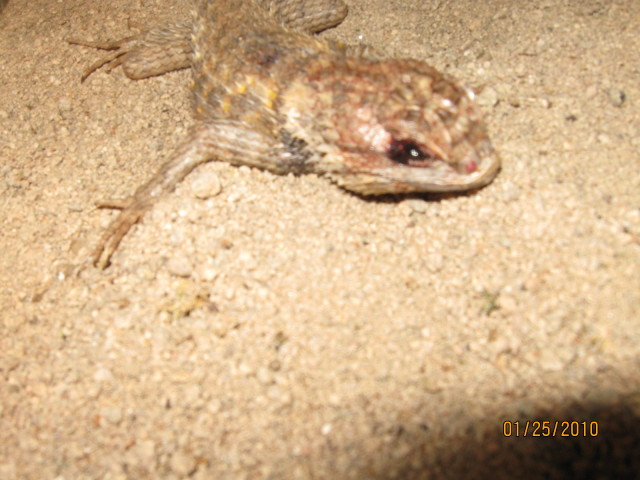 desert spiny lizzard
QuestionEYE
QUESTION: back in June my sister fou
desert spiny lizzard
QuestionEYE
QUESTION: back in June my sister fou
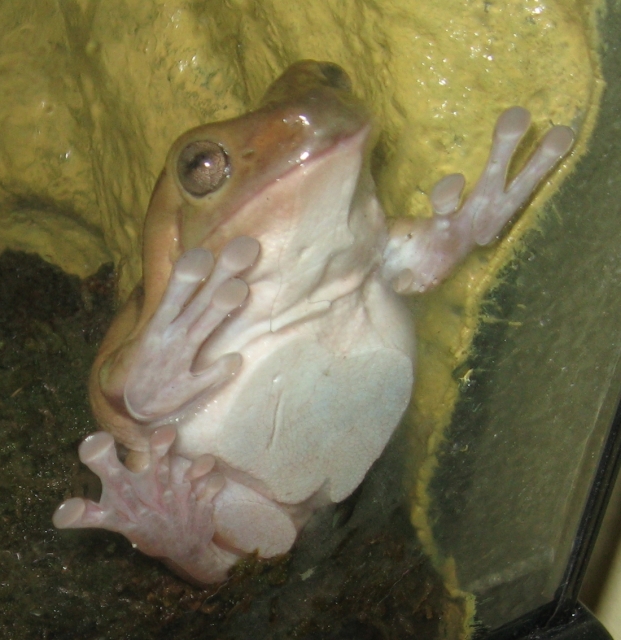 dumpy tree frog eating habits
QuestionAre her feet normal?
QUESTION: I have ba
dumpy tree frog eating habits
QuestionAre her feet normal?
QUESTION: I have ba
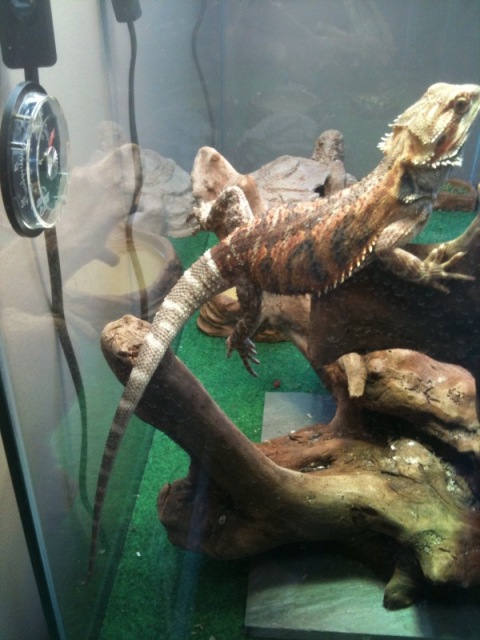 bearded dragon tail turned white
QuestionBDs white tail
QUESTION: My 8 month old
bearded dragon tail turned white
QuestionBDs white tail
QUESTION: My 8 month old
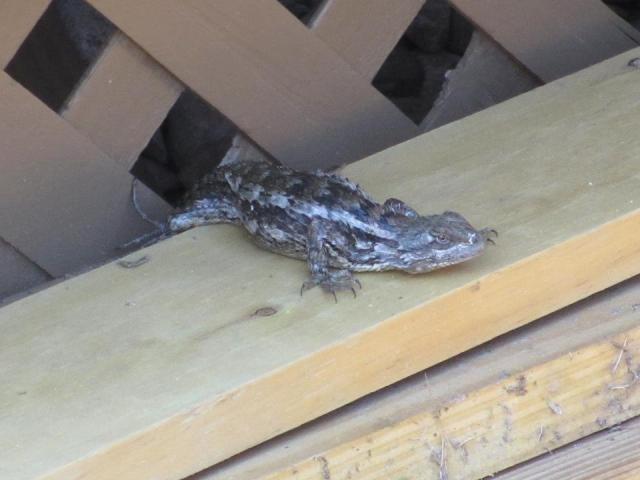 Lizard under my deck
Question
Unknown Lizard Species
Cant identify th
Lizard under my deck
Question
Unknown Lizard Species
Cant identify th
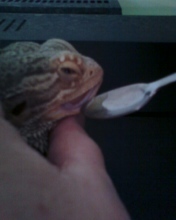 Bearded Dragon Eyes
QuestionBearded Dragon Eyes
QUESTION: Hi Tracie,
Bearded Dragon Eyes
QuestionBearded Dragon Eyes
QUESTION: Hi Tracie,